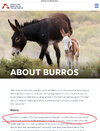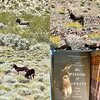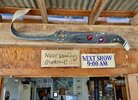Does "invasive" equal "introduced"? (no but...)
Well, you would have to get everyone to agree on exactly what those terms mean and apply them across the board equally, and that just isn't happening. "Invasive," for example, has been defined by scientists, the government, and lay people, the the criteria not applied equally. In other words, there is a lot of fickleness in the classification of these animals depending on the whims of humans. So, this is actually an interesting question on many levels.
By 'introduced,' I take it we are talking about by human action, both intentional and unintentional. Otherwise, we have critters like cattle egrets and armadillos that apparently arrived here naturally. Cattle egrets came over to the New World from Africa, apparently via the trade winds in the late 19th century, although they may have been come additional times via trade winds and storms. The advancement of the armadillos from their breakout from the Rio Grande valley into Texas and then out of Texas has was well documented in the early 20th century, initial spread being quite natural. Then, the plots started hopscotching as armadillos apparently managed to benefit from mechanical travel to other regions. Armadillos are invasive everywhere they are located, despite being in some areas quite naturally.
Coyotes, are a mixed bag. They are naturally expanding their range eastward, in part, due to the lack of wolves. However, because they are native to North America and are occupying an open niche left by the wolves, they are not considered invasive. The problem here is that when an animal does expand its range into an area where it can survive, it will be in competition for resources and/or do harm to other species there already. That would be one of the parameters of being classified as invasive by the federal government (environmental harm).
With that said, not all introduced species are considered invasive, particularly those that don't survive very well and don't seem to be harmful to other species, like pheasant.
Strangely, cattle would be very much an invasive species if we didn't eat them so readily. We actually keep their invasiveness in check, yet things like burros are invasive.
Part of the problem is with the definition of invasive, both in layman's terms and as defined by the government.
As per
Executive Order 13112 (Section 1. Definitions) an "invasive species" is a species that is:
1) non-native (or alien) to the ecosystem under consideration and,
2) whose introduction causes or is likely to cause economic or environmental harm or harm to human health.
So, a species that is naturally expanding its range may be invasive if we don't like it for some reason. An introduced species may not be invasive so long as we have them nicely managed, but may be "invasive" locally when they get out and do their thing.
Yet grazing fees remain puzzlingly low.

www.hcn.org
By and large, as near as I can tell, "invasive" means that an animal wasn't here previously that is here now and doing well and 'we' don't like it for some reason. The animal may be a natural or cultural range expander and may be native or non-native. Of course, "nativeness" also seems to be a dubious point. An animal may be considered native if it was present is a generalized region (e.g., North America) even if it didn't occur across the whole of North America. An animal may be invasive if it occurred in one area of a generalized region, but has expanded its range within the general region.
So, the burros in question are not invasive despite being non-native and known to do environmental harm
https://www.nps.gov/deva/learn/nature/invasive-burros.htm but we like them for their historical contribution to the development of the USA and so they are protected. Go fricking figure.










